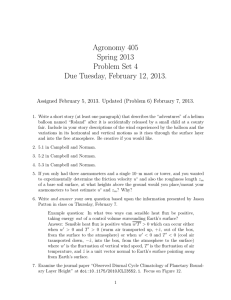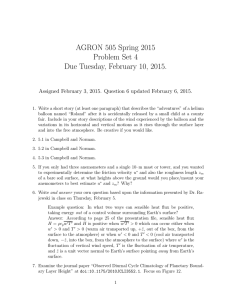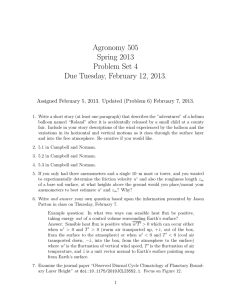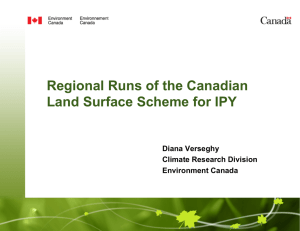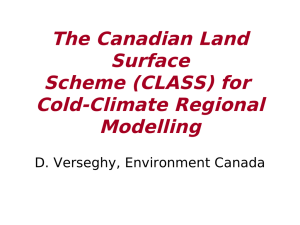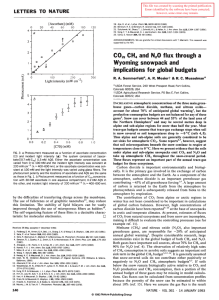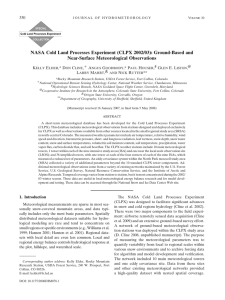AGRON 405 Spring 2015 Problem Set 4 Due Tuesday, February 10, 2015.
advertisement
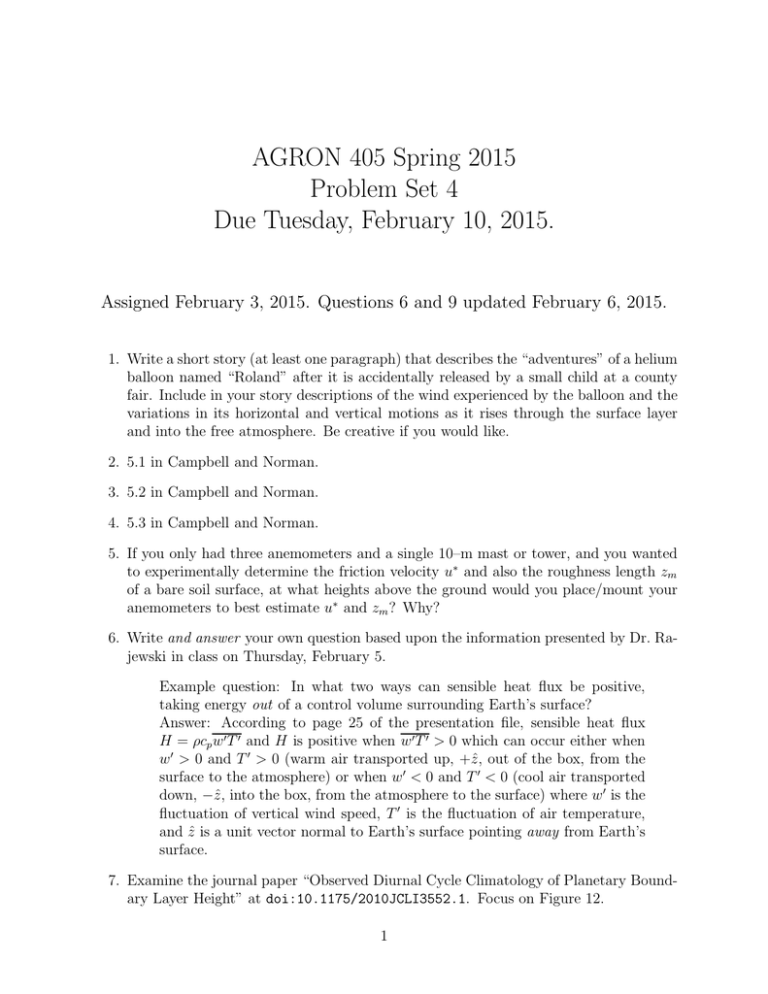
AGRON 405 Spring 2015 Problem Set 4 Due Tuesday, February 10, 2015. Assigned February 3, 2015. Questions 6 and 9 updated February 6, 2015. 1. Write a short story (at least one paragraph) that describes the “adventures” of a helium balloon named “Roland” after it is accidentally released by a small child at a county fair. Include in your story descriptions of the wind experienced by the balloon and the variations in its horizontal and vertical motions as it rises through the surface layer and into the free atmosphere. Be creative if you would like. 2. 5.1 in Campbell and Norman. 3. 5.2 in Campbell and Norman. 4. 5.3 in Campbell and Norman. 5. If you only had three anemometers and a single 10–m mast or tower, and you wanted to experimentally determine the friction velocity u∗ and also the roughness length zm of a bare soil surface, at what heights above the ground would you place/mount your anemometers to best estimate u∗ and zm ? Why? 6. Write and answer your own question based upon the information presented by Dr. Rajewski in class on Thursday, February 5. Example question: In what two ways can sensible heat flux be positive, taking energy out of a control volume surrounding Earth’s surface? Answer: According to page 25 of the presentation file, sensible heat flux H = ρcp w ′T ′ and H is positive when w ′T ′ > 0 which can occur either when w ′ > 0 and T ′ > 0 (warm air transported up, +ẑ, out of the box, from the surface to the atmosphere) or when w ′ < 0 and T ′ < 0 (cool air transported down, −ẑ, into the box, from the atmosphere to the surface) where w ′ is the fluctuation of vertical wind speed, T ′ is the fluctuation of air temperature, and ẑ is a unit vector normal to Earth’s surface pointing away from Earth’s surface. 7. Examine the journal paper “Observed Diurnal Cycle Climatology of Planetary Boundary Layer Height” at doi:10.1175/2010JCLI3552.1. Focus on Figure 12. 1 (a) Over which surface (land, ocean, or ice) does the PBL change the most over the course of a day, on average? Explain why this makes sense. (b) Over which surface (land, ocean, or ice) does the PBL change the least over the course of a day, on average? Explain why this makes sense. (c) What is the maximum and mininum diurnal heights of the PBL over land, and at what time (LST = local solar time) do they occur, on average? 8. Read “No–Till and Snow Can Help Crops Grow” at http://www.ars.usda.gov/is/ AR/archive/aug12/snow0812.htm. (a) Standing wheat residue (the dead plant material left after harvest) on a no–till farm (the residue was not plowed into the soil after harvest, but just left alone) had two effects on snow cover. What are these two effects? (b) What is the benefit of no–till in terms of its interaction with snow for ridge tops (high areas in the field)? (c) What is the benefit of no–till in terms of its interaction with snow for valleys? (d) Fundamentally, how does residue effect snow cover? Try to use the words “wind” and “momentum” in your answer. 9. Read about soil loss at http://www.sciencedaily.com/releases/2014/06/140618163922. htm. (a) What are the two ways that soil can be lost? (b) Name two ways that soil loss can be prevented. 2
